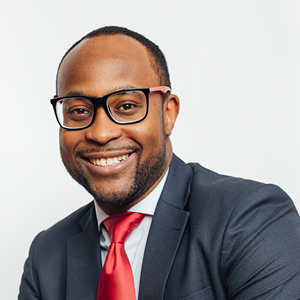Is the United States living through a backlash to the push for greater diversity and inclusion? Headlines about challenges to diverse books and educators across the country certainly can foster that impression. But does such a broad characterization overlook the important role of individual action?

Our discussion with Northwestern University Professor Nicholas Pearce was a bracing, yet ultimately encouraging, reminder that our choices are critical to fostering a more inclusive society. We spoke with Pearce, winner of an Aspen Institute Ideas Worth Teaching Award for his course “Beyond Diversity: The Fundamentals of Inclusive Leadership,” about this, our present moment—and the way forward.
![]()
Your course is titled “Beyond Diversity: The Fundamentals of Inclusive Leadership.” What does it mean for leadership to go beyond diversity, and why does it matter, both for society and for business?
Any company that is still debating whether diversity is worth embracing, valuing, and engaging in a meaningful way has already fallen behind. Diversity—the rich tapestry of human differences that characterize our communities, our workplaces, and our marketplaces—is here to stay. Yet, in order to benefit from the rich advantages that diversity can yield, leaders must be committed to going beyond diversity to work toward inclusion, equity, and justice. This work is about more than producing soundbites full of empty promises. It has to be more than performative pledge-signing and check-writing by CEOs.
The ultimate goal of going beyond diversity is to facilitate human flourishing by creating workplaces, marketplaces, and communities in which everyone can truly be and bring their best each and every day, without regard to their age, gender, race, ethnicity, disability, religion, socioeconomic class, or other identities. This is not just good for business—it’s good for humanity. Going beyond diversity is imperative for the sustainability of our society and the organizations that make our society work.
The central assignment for the course is a kind of “Diversity, Equity & Inclusion” audit of a company, in which you urge students to “Pay attention to what information is available publicly versus what must be gleaned privately,” in their research. Why is this important for students, and how does the course prepare students to become change agents in business?
It is often said that the journey of a thousand miles begins with the first step. One of the most important first steps that any company can take on its diversity, equity, inclusion, and justice journey is to take a sober look at the current state of the organization. Assessing the organization’s strengths, weaknesses, and opportunities related to their workforce, workplace, marketplace, and community-focused DEI efforts is an essential step to developing a sustainable strategy. Giving my students the opportunity to conduct such an assessment will help them in their careers—whether they lead change in their organizations from within the DEI function or whether they simply act as DEI champions in marketing, finance, operations, or other areas of their organizations.
Unfortunately, one common experience shared by many DEI leaders is that their organizations intentionally restrict their access to the very data that they have been hired to impact. In other words, many companies talk a good talk about DEI at the same time as they intentionally tie the hands of their DEI leaders. With this project, I just want to encourage my students to learn how to probe beneath the surface of the information that may be presented in the public domain to gain access to privately-held perspectives that help paint a richer, more comprehensive picture of an organization’s current state. Asking the right questions the right way is as much art as it is science. Having a sharp sense of discernment that can help leaders think critically and tease apart the difference between fact and fiction can be a game-changing tool for change agents. This project simply gives them first-hand exposure to how challenging—and how necessary—this work can be.
One thing that stands out about your course is its engagement with the history of diversity and inclusion in the United States. Drawing on that broader historical perspective, how would you characterize 2022? What are the challenges, and opportunities, of our current moment?
We are now two years post the murder of George Floyd and the resulting tsunami of corporate and societal discussion about racial inequality. At this point, many leaders are suffering from “diversity fatigue” because the road to change is filled with potholes, barricades, hills, valleys, and lots of slow-moving traffic. Many people are tired of talking about diversity, equity, and inclusion. Still others are tired of tolerating the conversation being had around them, so their politically-correct politeness is wearing thin and their ardent resistance is unveiling itself.
The principal challenge for leaders who are committed to advancing DEI in the current moment is to stay the course and resist the urge to give in to incrementalism. The most successful leaders will be those who possess (1) clarity on what success looks like and why it’s important to pursue, and (2) the courage to lead their organizations toward realizing that vision. Too many people are still not getting fair access to educational and economic opportunities and we’re all paying the price—maintaining the status quo is simply not an option.
As alumni from your course go into leadership positions across industries and sectors, what is the one lesson that you hope will stick with them throughout their careers?
I hope that alumni from my course will remember that bold, courageous, values-driven action is more important than mere awareness of or empathy regarding other people’s pain. Awareness of inequality and injustice is important. Empathy regarding the impact of inequality and injustice is important. But as one of my colleagues, Tyronne Stoudemire, who serves as SVP & Head of Global Diversity, Equity, and Inclusion at Hyatt Hotels Corporation often says, empathy plus action equals care. If you really care, you cannot just learn important lessons and feel strong feelings about the implications of those lessons—you have to actually do something with what you’ve learned and with what you feel.
Leaders are not always the ones who know the most—they are the ones who have the courage to make the hard choices that have implications for individuals, families, communities, nations, and even the world. If my students leave my class knowing that they have the responsibility to use their power and influence for good, I was successful. I often share the proverb that “we have not inherited the world from our ancestors; we borrow it from our children.” If my students leave my classroom knowing that they are charged with creating a better world for our children’s children, one decision at a time, my teaching will not have been in vain.
![]()
Interested in more innovative insights for business education? Browse our complete collection of interviews with outstanding educators, and subscribe to our weekly Ideas Worth Teaching digest!

